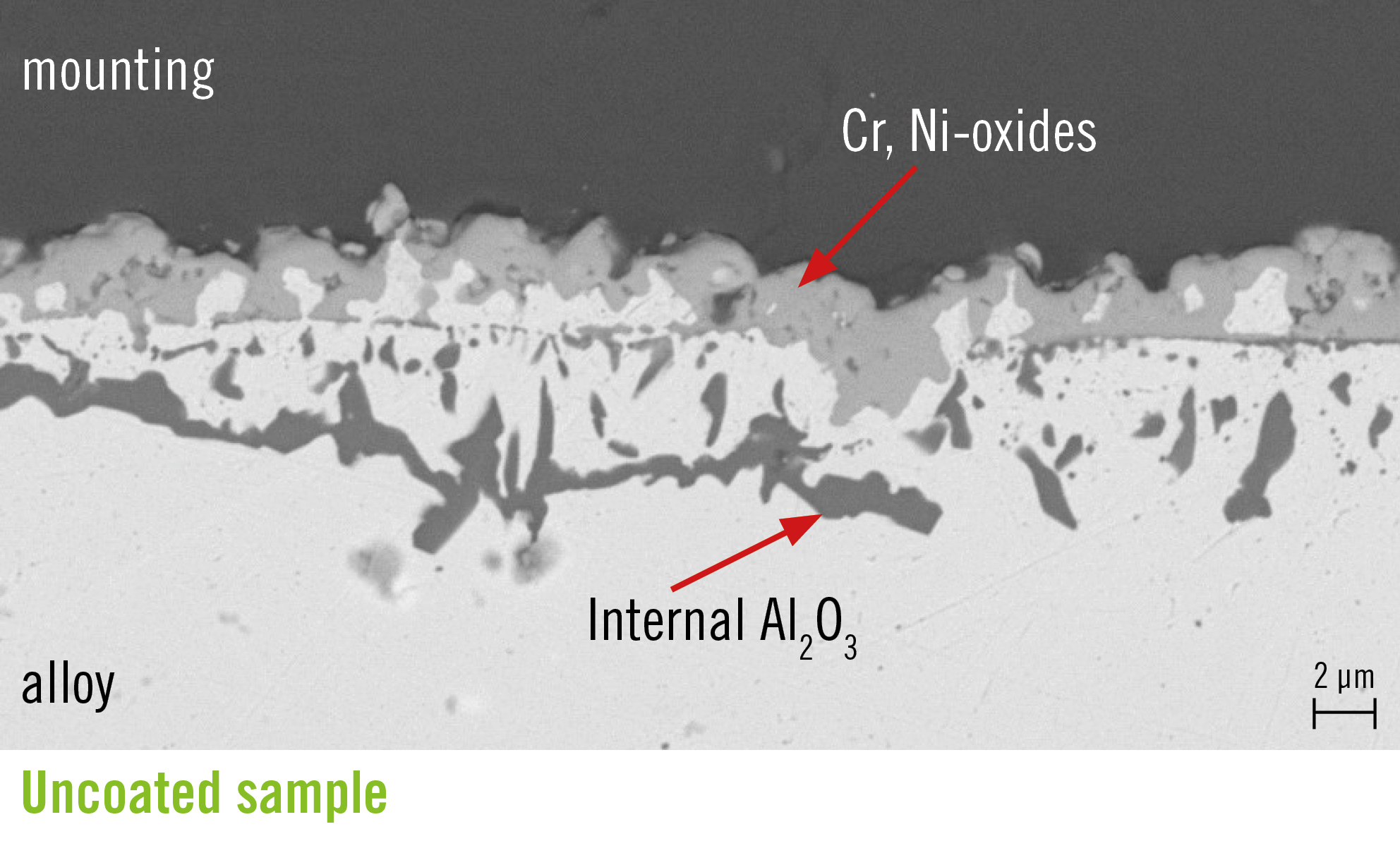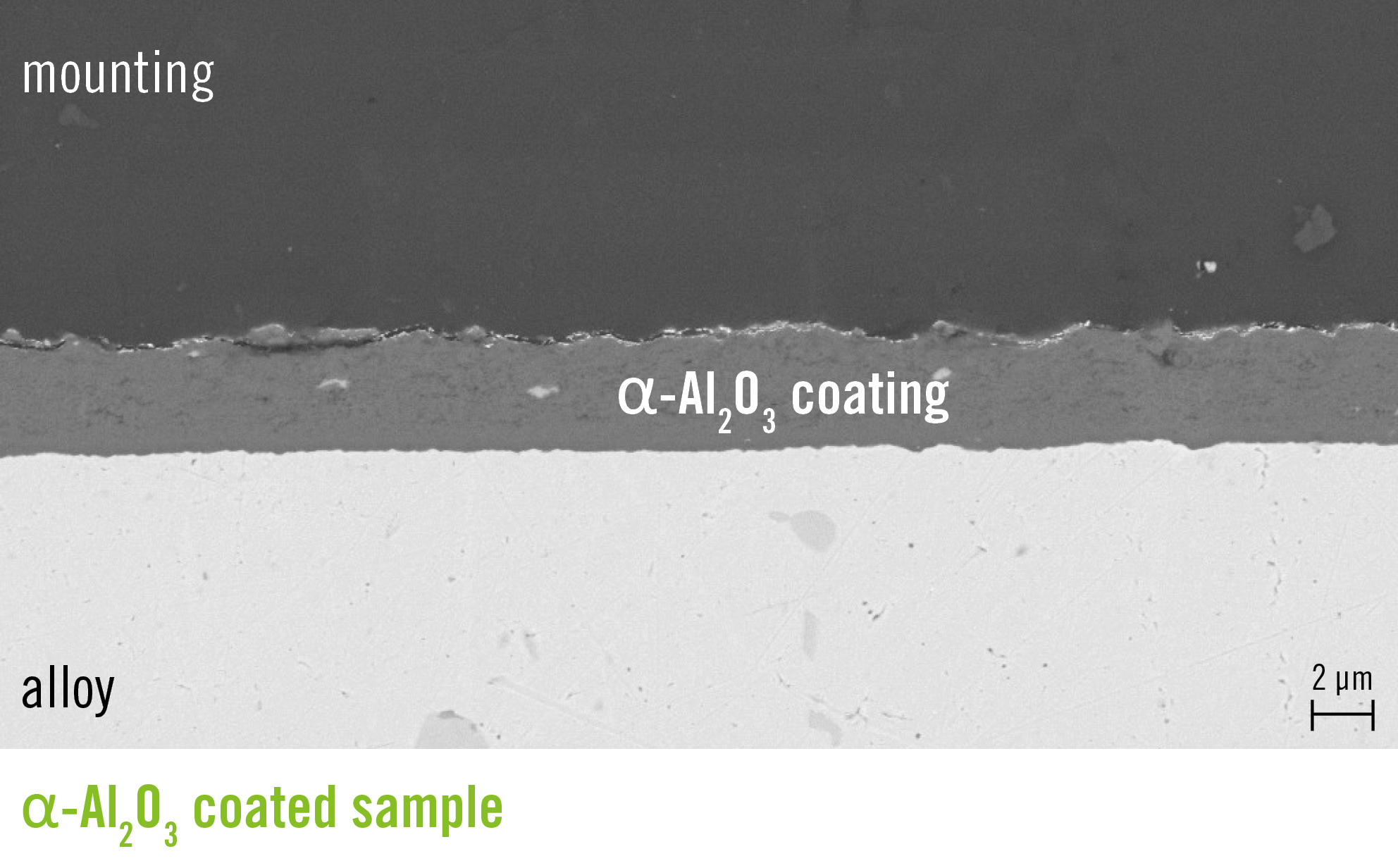Patented coating process from Heraeus extends the service life of high-temperature alloys for furnaces and chemical plants.
"The results of our study are very promising," says Dr. Ilka Luck, head of Heraeus High Performance Coatings. "The coating prevents any microstructural changes, voids and precipitations. Thus, alloy corrosion is greatly reduced. As a result, their service life is up to eight times longer."
One of the biggest challenges of high-temperature alloys is that their service life is limited by corrosion. Apart from maintenance downtime, the corrosion causes flaking, and these flakes contaminate products during production. This is precisely where the novel process from Heraeus comes in. With the aid of aerosol deposition, the alloys are protected with a layer of ⍺-Al2O3. Possible applications include calcination and drying furnaces, which are used for example in metal substrate production or the manufacture of battery materials. In these industries, high purity is essential. Avoiding impurities therefore means reducing scrap and increasing productivity.
How corrosion of high temperature alloys happens
High-temperature alloys are characterized by high creep strength and mechanical resistance at higher temperatures. Therefore, they are used in many applications where temperatures range between 400-1400 °C.
If the alloys contain at least 0.5 % aluminum, they have a limited ability to protect themselves by forming an Al2O3 layer on the alloy's surface. However, at temperatures below 1000 °C, metastable phases such as θ- and ɣ-Al2O3 form. As the temperature is ramped up and down, phase transitions occur with corresponding volume changes. These phase transitions lead to voids that allow corrosion to occur. In addition, the aluminum required for Al2O3 layer formation is rapidly consumed, the alloy is depleted, and the properties suffer.
Protective effect proven by study
For the study conducted by Heraeus, alloy 602 (NiCr25FeAlY) was used, an MCrAlY alloy with an aluminum content of 1.8 - 2.4 %. Samples were coated with a 5 µm thick ⍺-Al2O3 layer by aerosol deposition at room temperature. A 50-hour heat treatment at 1000 °C was then performed, simulating the temperature in the actual application. In contrast to an untreated sample, the coated sample shows no microstructural changes in scanning microscopy cross-section.
These results can be transferred to all nickel alloys with a minimum aluminum content of 0.5 %. "Of course, we are now conducting additional long-term tests under realistic conditions and tests with other alloys to further prove the effectiveness of our ⍺-Al2O3 coating," says Luck.



